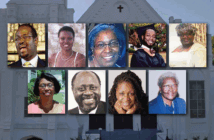God told Jeremiah “to uproot and to tear down, to destroy and to overthrow, to build and to plant.” These biblical directions are the definition of innovation in the church. If congregations truly recognize that the future is now, they will identify ministries, practices, traditions, ideas and behaviors that need to be plucked up, pulled down, destroyed, and overthrown. They will sacrifice “sacred cows” in the name of progress to allow for new people, ideas, ministries, practices, and traditions to be planted and built.
What stands in the way of your congregation engaging in this gospel of innovation? Often, it’s people who say, “that’s what we’ve always done,” without understanding why they do it.
What stands in the way of your congregation engaging in this gospel of innovation? Often, it’s people who say, “that’s what we’ve always done,” without understanding why they do it. Congregations seeking to embrace innovation and reach new generations must be clear on the deal breakers — those beliefs and practices they are unwilling to yield on because they pertain to someone’s salvation. Real deal breakers point to the heart of faithful living.
More times than not, perceived deal breakers are merely preferences. The color of the paint on the sanctuary walls is not a deal breaker. While many hold the worship time dear, it is not a deal breaker. The meeting space of Sunday School classes is not a deal breaker. Traditions are not deal breakers. Ideas are not deal breakers.
This is not to say that congregations do not need to stand up for what they believe. They must be clear and transparent about their beliefs. And their actions should reinforce and serve as practical examples of their faith. The theology of a congregation, when based in scripture, tradition, reason, and experience, does qualify as a deal breaker. Almost everything else is on the list to see if it qualifies for an innovative overhaul. Congregations should not confuse strong values and clear faith practices with long held preferences.
This article is adapted from Doug and Jasmine’s book, Not Safe for Church: The Ten Commandments for Reaching New Generations (Abingdon Press, 2014). Used by permission of the publisher. Not Safe for Church is available from Cokesbury and Amazon.
Related Resources:
- Evangelism Today Requires New Wineskins by F. Douglas Powe, Jr.
- Moving Beyond Personal Preferences Into Missional Thinking by Ed Stetzer and David Putman
- If Churches Can Change, They Can Grow by Lovett H. Weems, Jr.







